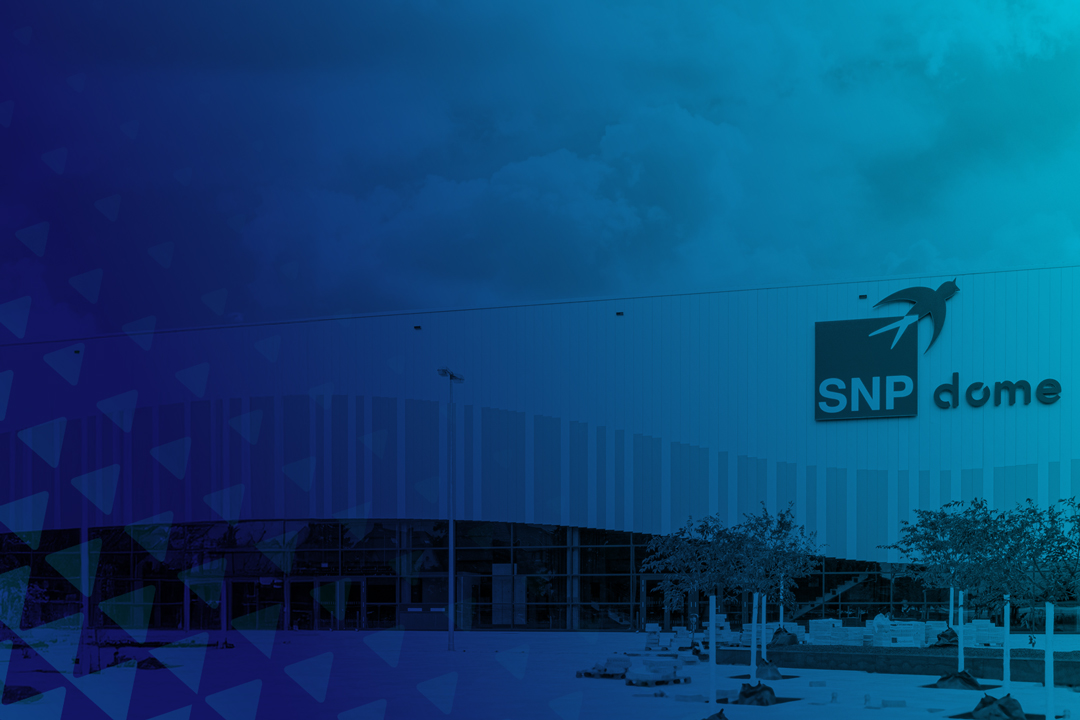System decommissioning vs. active archiving: A practical guide for SAP teams
Running legacy systems just to keep old data accessible is costly and risky. This guide will help you understand how system decommissioning and active archiving work together to simplify data management, strengthen compliance, and prepare your business for the future.
Share
Many companies still run old systems just to access historical data. Keeping them alive drains budgets, eats up resources, and creates unnecessary security risks.
With the 2027 S/4HANA deadline getting closer, IT teams need clear decisions on how to handle legacy data without losing access or breaking compliance rules.
That’s where system decommissioning and active archiving come in. They’re often mentioned together but solve very different challenges. Understanding how they differ – and where each fits best – can help IT teams plan smarter, reduce costs, and move forward with confidence.
By the end of this guide, you’ll know how to:
- Tell the difference between system decommissioning and active archiving
- Decide when each approach is right for your organization
- Plan your path toward a leaner, compliant data environment
- Apply proven practices from enterprises that have already succeeded
Let’s start with what system decommissioning is and what makes it such a crucial step in your data management strategy.
System decommissioning: Retire your old systems without losing data access
System decommissioning means shutting down old applications for good while keeping their data available, secure, and compliant. You may know it as application retirement, the term many analysts and vendors use, but in the SAP world, system decommissioning is the more common way to describe the same process.
Many companies keep outdated systems running just in case someone needs an old invoice or audit record. But those systems still need servers, patches, and specialized expertise that become harder to maintain every year. Decommissioning ends that cycle by extracting all relevant business data (including historical transactions, master data, and even open items) and storing it in a modern, certified cloud environment.
Once decommissioned, the original system is no longer needed. Data remains accessible through a dedicated application such as Kyano Datafridge, which provides user-friendly, read-only views directly within the SAP S/4HANA system or any other SAP ABAP-based productive system. This ensures full transparency for audits, reporting, and business queries, without the need to keep the old system alive.
System decommissioning helps organizations:
- Reduce infrastructure and licensing costs
- Eliminate maintenance for unsupported systems
- Simplify their IT landscape and reduce operational risk
- Keep historical data secure and audit-ready in a certified cloud environment
For example, Dow used Kyano Datafridge to decommission more than 40 terabytes of SAP R/2 and R/3 data while meeting strict data governance and legal retention requirements. All records remain accessible for audits and business queries through modern, cloud-based views.
Decommissioning lets you close the chapter on outdated systems while keeping historical data secure and compliant.
The next challenge is managing the data that stays in use every day. That’s where active archiving helps keep performance high and storage costs under control.
Active archiving: Keep your live systems lean and efficient
Active archiving means moving data that is rarely used but still relevant from production systems into a secure archive. The goal is to reduce the size of live databases while keeping archived information easily accessible when required.
Typically, inactive transactional data – such as completed orders, deliveries, or accounting documents – is archived, while master data and open transactions remain in the live system. This ensures that day-to-day operations are unaffected and users can continue working with current data without slowdowns.
Archived data stays accessible through standard SAP transactions or specialized archive viewers, so users can still retrieve historical records without reactivating the original data.
Active archiving helps organizations:
- Improve system performance by reducing database size
- Speed up S/4HANA migrations by cutting the volume of data to be moved
- Lower storage and maintenance costs
- Ensure long-term access to archived data for audits and reporting
Among the solutions available on the market, Kyano Outboard ERP Archiving offers an efficient way to move inactive transactional data from SAP ECC systems into certified storage.
Moreover, active archiving plays a crucial role in preparing for an S/4HANA migration. This approach reduces the production data footprint early in the project and keeps systems responsive while ensuring that archived information remains fully accessible through standard SAP transactions.
Active archiving complements decommissioning by keeping your operational systems efficient today and making tomorrow’s transformation projects simpler and faster.
Decommissioning and active archiving serve different purposes, but together they create a complete strategy for managing data through every stage of its lifecycle.
The key differences between system decommissioning and active archiving
Each approach plays a distinct role in managing enterprise data. Active archiving keeps current systems efficient, while system decommissioning closes out the legacy ones. Knowing where each applies helps you plan your roadmap with fewer dependencies, fewer risks, and a clearer path to long-term cost control.
Scope
Active archiving reduces the data load within a system that remains in daily use. It moves older, less frequently accessed information into a secure archive to free up space and improve speed.
System decommissioning retires an entire application once it’s no longer needed. Relevant data is preserved in a compliant, read-only environment so the legacy system can be shut down completely.
Purpose
The two approaches serve different objectives within the same strategy:
- Active archiving keeps production systems lean, stable, and cost-efficient while supporting ongoing operations and future migrations.
- System decommissioning closes the lifecycle of a legacy system once its data is no longer needed for day-to-day work, removing technical debt and ongoing maintenance costs.
Timing
Active archiving is continuous and should be part of regular data routines. It can start well before a migration project begins.
System decommissioning usually comes later, once the data has been archived or migrated and the new environment is fully operational. It is the final step that frees IT teams from legacy upkeep.
Side-by-side comparison
The table below summarizes how both approaches fit into the wider data lifecycle strategy. Use it as a reference when planning your transformation roadmap.
| Active archiving | System decommissionig / application retirement | |
| Definition | Moves historical data from a live system to an archive while the original application remains operational | Retires the legacy system entirely, moving all data to a target system or platform for long-term storage |
| Scenario | When a system remains in daily use, but historical data is slowing performance or complicating migrations | When a legacy system is no longer needed for daily operations, but historical data must be preserved for audits, reporting, or compliance |
| Data types supported | Only historical transactional data can be moved | All data, including master data and open transactions, can be moved |
| Data access | Archived data can be read in the original application transactions | Requires a special application (e.g. Kyano Datafridge) to access legacy data in the new environment |
| TCO / costs | Lower than keeping a full system live but still incurs maintenance costs | Significantly lower TCO by eliminating legacy system overheads |
| Security and compliance | Data resides in the original system; subject to existing system security | Data is stored in modern cloud infrastructure – securely and compliantly |
| Limitations / consideration | Cannot archive master data or open transactions | Requires a target system and special access application; data reading depends on new tools |
| SNP solution | Kyano Outboard ERP Archiving | Kyano Datafridge |
This comparison makes it clear that the two approaches are complementary, not competing. Together, they create a practical, compliant, and future-ready data strategy.
A clear data retirement strategy is more than housekeeping. It lays the groundwork for faster migrations, cleaner systems, and more confident decision-making across the business.
The next step is to bring that strategy to life in a way that fits your organization’s goals and timeline.
Your next steps: Putting your data strategy into action
You now have a clearer view of how decommissioning and active archiving work together to reduce complexity, cut costs, and strengthen compliance. The next step is to turn that understanding into measurable progress.
Here’s where to start:
- Map your current systems and data landscape: Identify which applications are still active, which are only used for reference, and which can be retired. This gives you a factual baseline for planning.
- Define your priorities and timelines: Decide which areas benefit most from active archiving now and which legacy systems can be scheduled for decommissioning later.
- Choose a trusted partner to guide the process: Working with experts who understand both sides of the data lifecycle helps you stay compliant, minimize disruption, and move faster toward your goals.
SNP has guided many organizations through this process, helping them simplify complex environments and gain lasting control over their data. Let’s talk about how we can support your team in building a strategy that works for your business and your timeline.
Frequently asked questions
No. Active archiving reduces the data volume within live systems, but it does not replace full system retirement. Decommissioning is the only way to shut down legacy systems completely while keeping data accessible and compliant.
El desmantelamiento suele seguir a grandes proyectos de transformación o migración. Una vez archivados los datos o trasladados a un nuevo entorno, el sistema heredado puede retirarse de forma segura sin interrumpir las operaciones.
Sí. Ambos enfoques garantizan la plena accesibilidad de los datos. Con soluciones como Kyano Datafridge y Kyano Outboard ERP Archiving los datos se pueden buscar y recuperar a través de interfaces similares a las de SAP para realizar auditorías, la elaboración de informes y análisis.
El archivado activo y el desmantelamiento garantizan que los datos históricos se almacenan en entornos seguros y certificados que cumplen las normas de la retención legal y específica del sector.
La gestión de la retención, que incluye funciones como la retención legal, contribuye al almacenamiento de datos conforme a la normativa, garantizando que los registros se almacenan de forma segura durante el periodo requerido y se destruyen automáticamente después. Además, las funciones integradas para el RGPD (y normas similares) admiten el enmascaramiento y la codificación de datos, lo que garantiza la protección de la información sensible y el cumplimiento de la normativa. Juntas, estas medidas ayudan a minimizar el riesgo durante las auditorías y las revisiones reglamentarias.
SNP trabaja con empresas para diseñar y aplicar estrategias de datos integrales, combinando su experiencia en el archivado, desmantelamiento y la transformación bajo un mismo techo. El objetivo es ayudarte a modernizar tus sistemas sin comprometer el acceso, el control o el cumplimiento.





